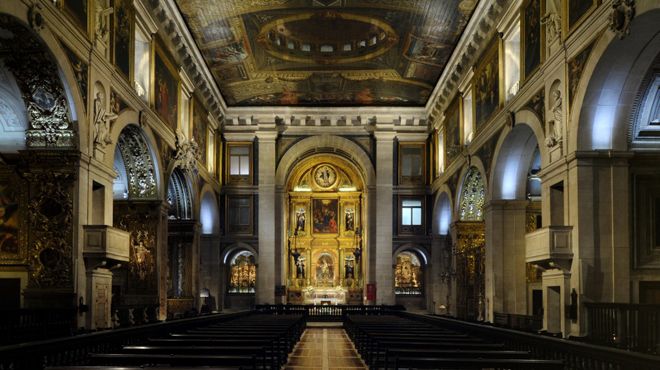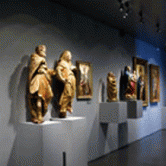Igreja de São Roque - Lisboa

Monuments
The Church of São Roque (Saint Roch)
In the 16th century, the place where the Church stands was cut off, beyond the city walls. Hence the reason it was chosen for the cemetery for burying victims of the plague. In 1506, a place of worship dedicated to Saint Roch, holy protector from the plague, was built. At that point, the Brotherhood of Saint Roch was founded. It was granted its own statues and supported both by the royal family and nobility as well as by the people. In 1553, the Company of Jesus took over the site and were authorised to construct the church but only with the obligation to maintain the Chapel to Saint Roque on the interior. Both have survived to present times.
Austere on the outside in accordance with Jesuit preferences, the interior is surprising. On entry, there is ample space in the Mannerist structure with the decoration baring witness to royal patronage, particularly that of king João V. The combination of marble, gold leafing and the tile panelling contributes to a scenic impression highlighted by the light-dark Mannerist contrasts and the careful effects of the lighting.
The Church´s design is the work of Filipe Terzi, royal architect to Filipe II of Portugal, the IIIrd of Spain. In the interior, there are a great deal of works of great artistic quality and value. This includes the main chapel with iconography representing the Company of Jesus. The paintings are completed in perspective (1588-89) by Portuguese painter Francisco Venegas, with panels by Francisco de Matos in the Chapel of São Roque dated 1584 (one of the first attempts in Portuguese tiling to use the Majolica technique). There are also the lateral Altars of the Relics and the Chapel of Saint John the Baptist of Italian origin.
In 1768, the Company of Jesus was expelled from Portugal by royal decree. The Church of São Roque and its respective holdings were handed over to Misericórdia de Lisboa. Currently it belongs to the Santa Casa da Misericórdia (a Religious-Charitable Institution) that runs the Museum of São Roque, by the side of the church.
1200-470 Lisboa





 Explore
Explore 
 Remember and Share
Remember and Share 


